Osaka Expo 2025: Japan’s Pavilion, Built from Waste
Japan’s national pavilion leans into the uncomfortable origin of its site
The Osaka Expo is built on a garbage island. That’s not a metaphor. Yumeshima, the site of Expo 2025, is literally reclaimed land, filled in with incinerated waste and construction debris. The landfill dates back to the 1970s, and for much of its life, it was neglected on the edge of Osaka.
Japan isn’t trying to hide this. In fact, the Japan Pavilion seems designed to explain it. Other countries use their pavilions to showcase what you’d expect at a world expo: art, food, landscapes, identity. Japan, as host, takes a different approach. It doesn’t need to introduce itself. The whole site is already a statement. So instead of displaying tradition, the pavilion offers an argument: this is why we built the Expo here.

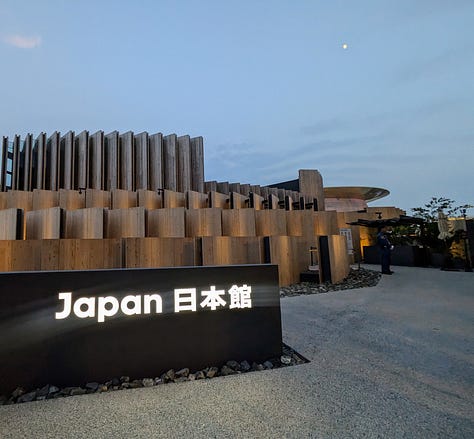

This isn’t Yumeshima’s first attempt at reinvention. In the 1980s, it was part of the ambitious “Technoport Osaka” project, a plan to transform Osaka’s waterfront into a hub of futuristic industry and commerce. But the bubble economy collapsed, and the project was shelved. In the early 2000s, the city bid for the Olympics and proposed Yumeshima as the site of the athletes’ village. That didn’t materialize either. For years, the island sat largely unused, a “negative legacy”.
Now it’s being rebranded as a symbol of renewal. Designed by Oki Sato (nendo) and constructed by architecture firm Nikken Sekkei, the Japan Pavilion is built entirely from interlocking wooden beams. No welding, just bolts and screws. From the outside, it looks like a forest of upright dominos. While you wait in the queue, there’s time to take it in. It’s orderly, light-filled, and strangely peaceful.
Inside, a model of sake-making is used to illustrate how waste can be turned into clean water and energy. Microbes break down food scraps. Algae thrive in transparent tubes. Biogas is harvested. Even the pavilion’s electricity is partially generated by a working biogas plant that processes food waste from the Expo grounds.
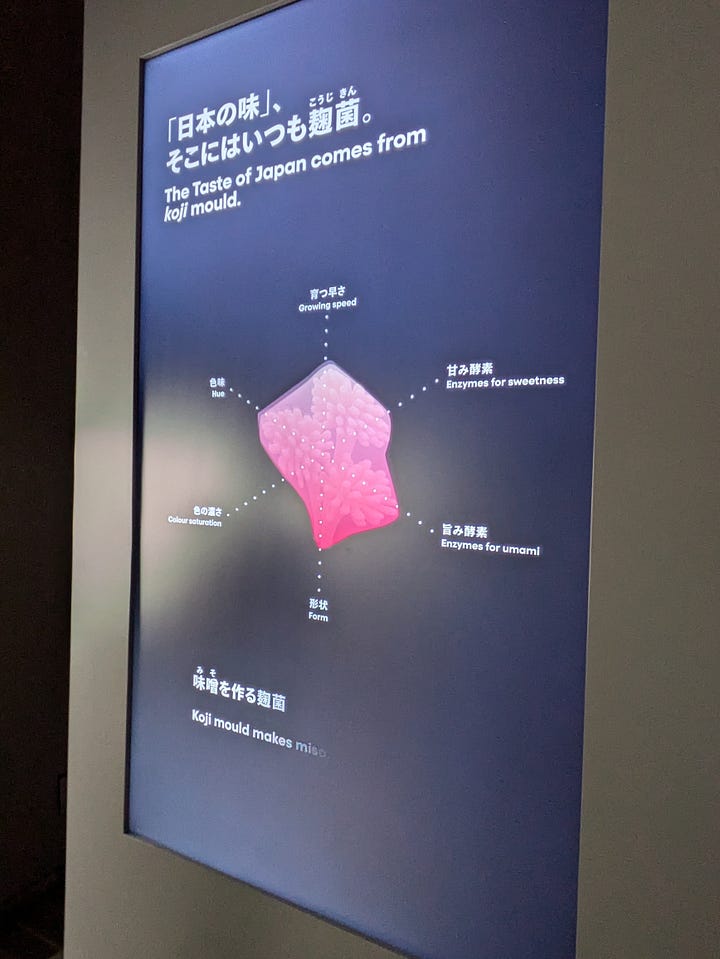
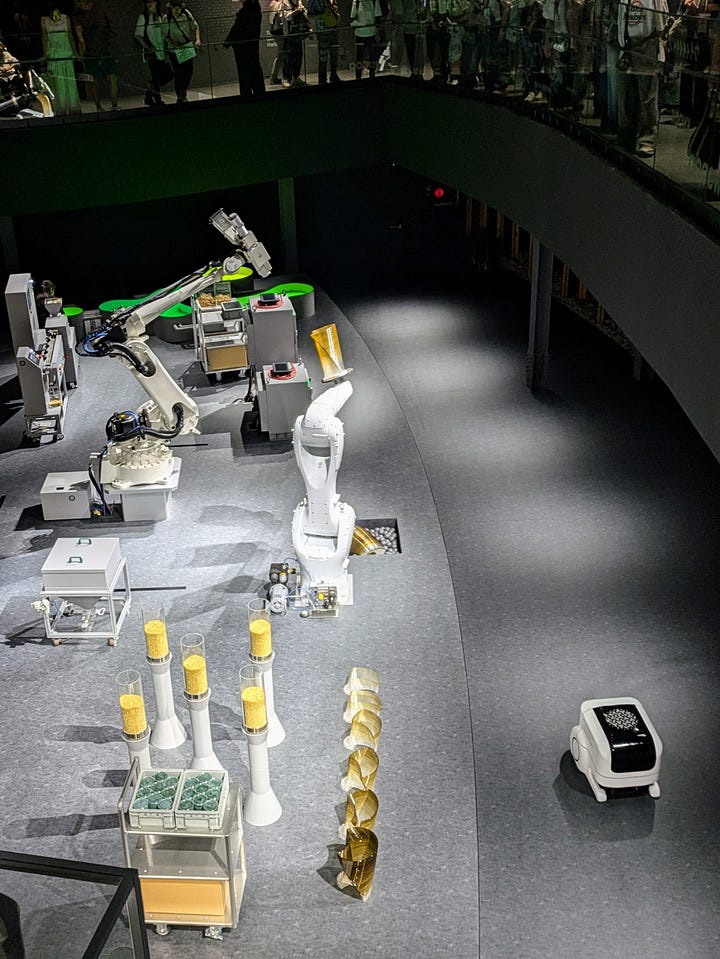
The exhibition is divided into three zones: Plant, Farm, and Factory, with a large water basin at the center. You move through sloping corridors of cross-laminated timber, open to the breeze. The stools are made from algae-based bioplastic. Seven hundred glowing panels hang from above, symbolizing the “brilliance of life.”
The pavilion’s unlikely mascot is Hello Kitty, rendered in bright green and dressed up as 32 different types of algae. It’s surreal, but not entirely out of place. Algae here is framed as a food source, a fuel, a material of the future, and Hello Kitty, in her many microbial outfits, delivers the message.

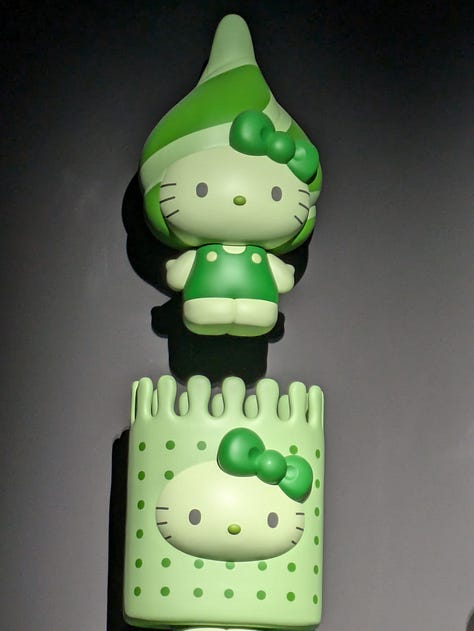
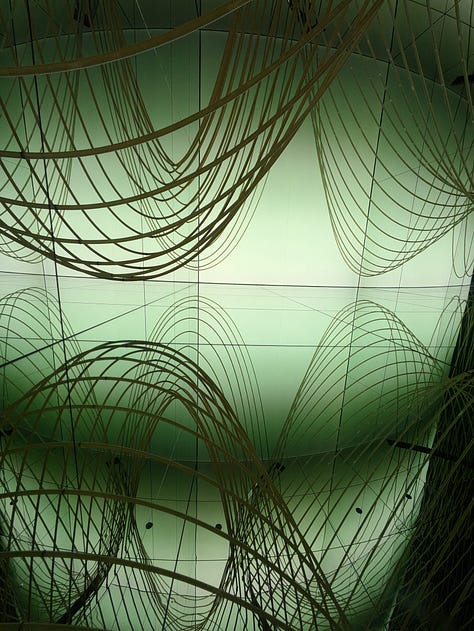
There’s also a meteorite, one of the largest ever found that originated from Mars, discovered by a Japanese Antarctic research expedition in 2000. Nearby, samples returned from the asteroid missions Itokawa and Ryugu are on display. It’s a strange juxtaposition: space dust and food waste, algae and cuteness. Manga panels narrated by the well loved character Doraemon, explain how Ise Jingu, one of Japan’s most important shrines is rebuilt every twenty years.
Beautiful and precise in parts, the pavilion can also feel a bit assembled, like the result of too many people with good intentions. The message isn’t polished but about the process. Waste becomes water. Microbes become fuel. A landfill becomes a future.
Selected References
https://www.pressance.co.jp/yuzusachi/magazine/market-trend/osaka/348/
https://2025-japan-pavilion.go.jp/magazine/en/issue01/feature02/
Brutus Casa Magazine June 2025
Japan Pavilion Pamphlet





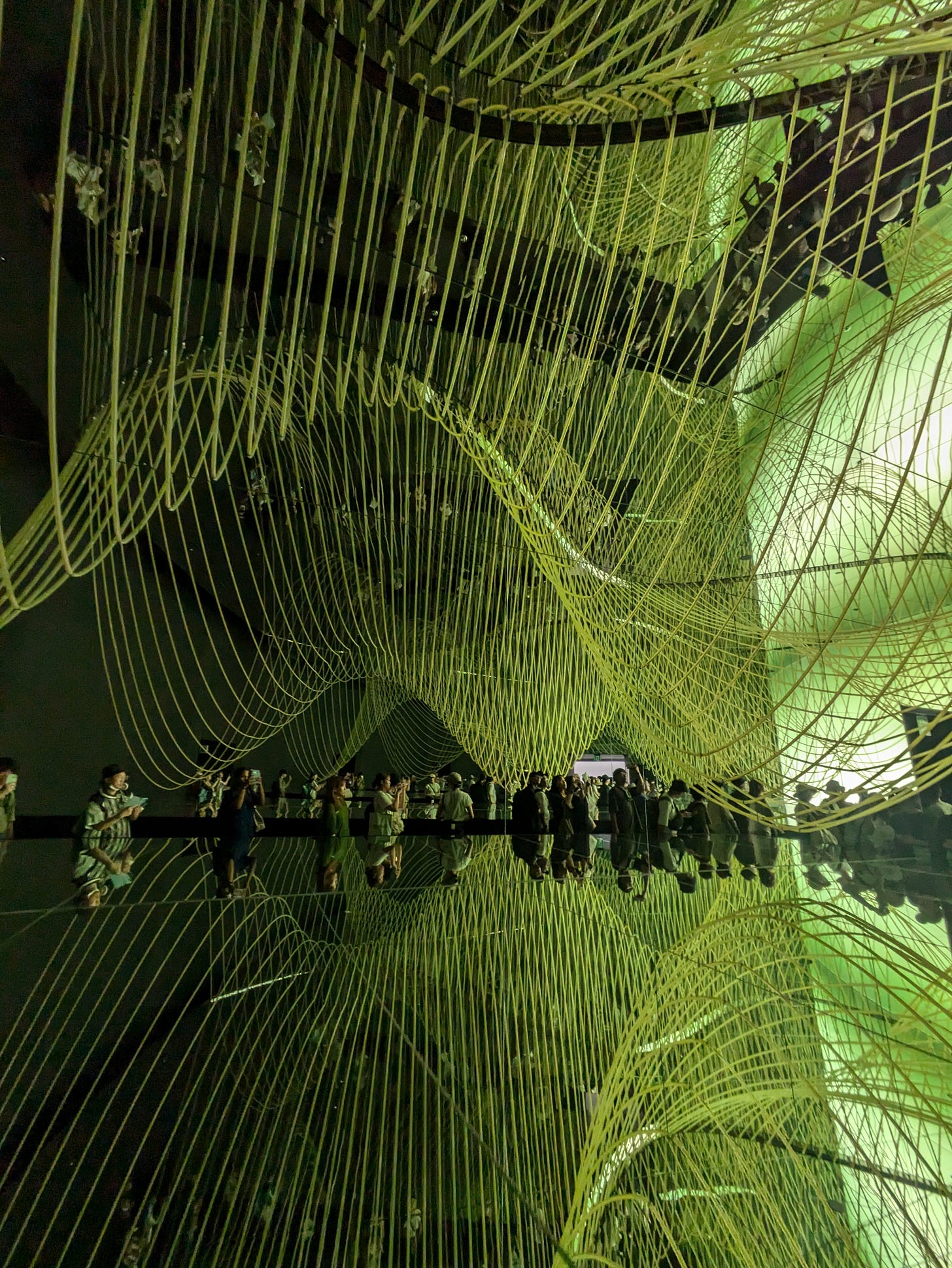
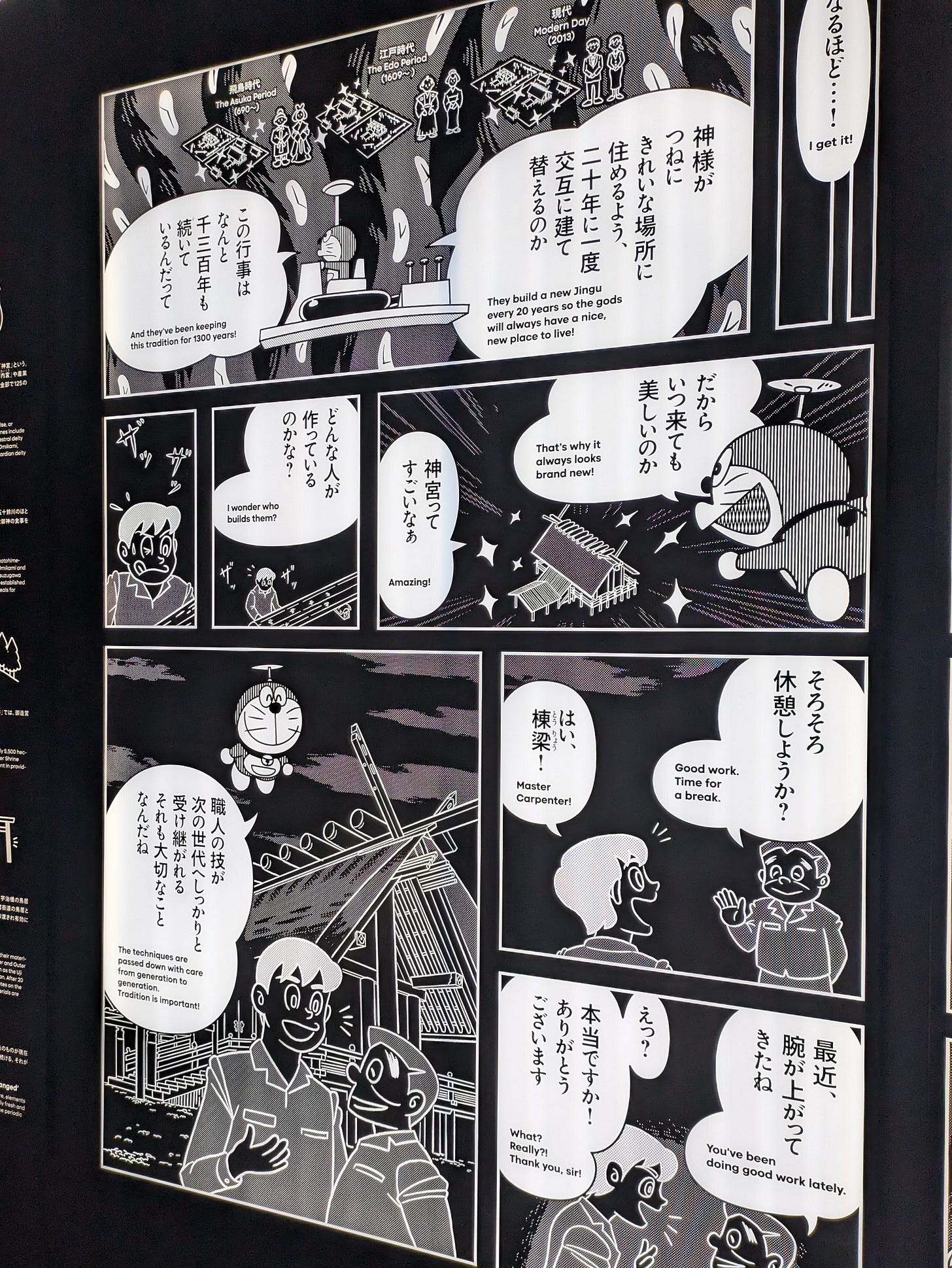
This is so cool! I have watched a few videos of people visiting the expo but none of them touched on this. Thank you for explaining all of this in detail- it would be great if this model could be implemented in other countries as well!